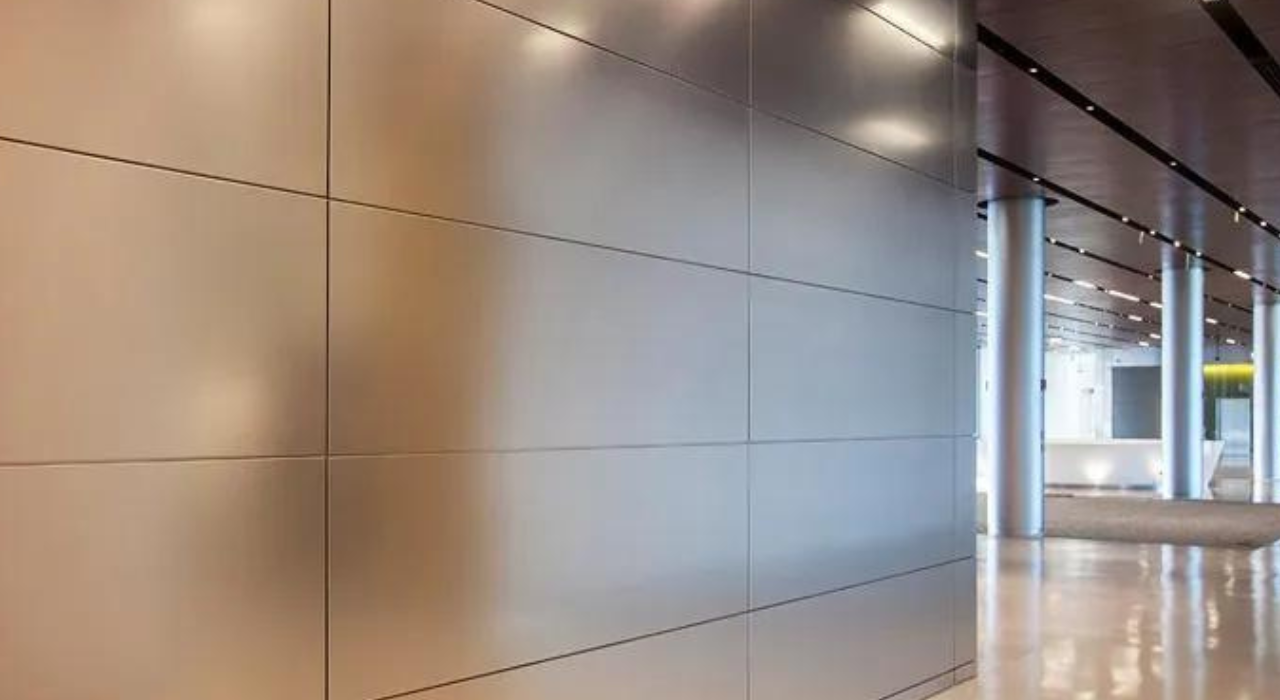Aluminum facade panels are a pivotal detail in contemporary structure, acknowledged for their mixture of capability and aesthetic appeal. Those panels, crafted from notable aluminum alloys, provide great durability, lightweight properties, and corrosion resistance. This makes them perfect for outdoor cladding in numerous environments.
Their versatility permits limitless design opportunities, accommodating exceptional shapes, sizes, and finishes to obtain specific architectural visions. Visit their website TBKmetal for more details about it. Additionally, aluminum facade panels enhance a building's energy efficiency by way of offering tremendous insulation, which allows adjust indoor temperatures and reduce power intake. Their recyclable nature also supports sustainability efforts in construction.
Process of Manufacturing Aluminum Facade Panels
Aluminum facade panels are synthetic through a series of well-described procedures, regarding multiple steps to make certain they meet the desired standards for construction and design. Right here's a detailed overview of the production process:
Material Selection
The manner starts with the choice of high-quality aluminum alloys. Generally used alloys are selected for their remarkable energy, durability, and corrosion resistance. These alloys are favored for their capability to face up to harsh environmental situations while preserving structural integrity.
Melting and Casting
The selected aluminum alloys are then melted in big furnaces at temperatures around 660°C (1220°F). The molten aluminum is then solidified into slabs or billets with the usage of continuous casting or direct kickback casting strategies. This initial casting technique bureaucracy the simple shape of the aluminum to be similarly processed.
Hot Rolling
The cast slabs or billets are preheated to cause them to be malleable for the following stage. They may be then exceeded through a series of rolling turbines in a system referred to as hot rolling. This step reduces the thickness of the aluminum and begins to form it into greater viable paperwork. The recent rolling technique also improves the material’s mechanical residences, making it greater suitable for subsequent processing stages.
Cold Rolling
Following warm rolling, the aluminum sheets undergo cold rolling. This manner includes passing the aluminum through rolling turbines at room temperature, which in addition reduces its thickness and enhances its surface end. Bloodless rolling increases the cloth's strength and hardness. After cold rolling, the sheets are annealed a warmth remedy technique that relieves inner stresses and improves ductility, making the material less difficult to work with in later levels.
Surface Treatment
Surface treatment is a fundamental stage in upgrading aluminum properties. The aluminum, most importantly, sheets are cleaned off to get rid of any oil, oil, or different foreign substances. This is accompanied by chemical pretreatment processes inclusive of anodizing or chromate conversion coating. These treatments appreciably enhance the corrosion resistance of the aluminum and make certain better adhesion of subsequent coatings.
Coating
Coating is crucial for each of the classy and protective qualities of the facade panels. The aluminum sheets are first primed to make certain the right adhesion of the topcoat. Then, a topcoat is applied using strategies including powder coating or coil coating. Commonplace coatings consist of PVDF or polyester, which offer awesome sturdiness and a huge range of color alternatives. These coatings now not the most effective in enhancing the visible appeal of the panels however additionally offer additional safety against environmental elements like UV radiation and pollution.
Reducing and Shaping
Once coated, the aluminum sheets are cut into panels of the required dimensions. This is generally achieved through the usage of CNC machines, laser cutters, or other precise slicing equipment. The panels may undergo shaping procedures such as bending, punching, or stamping to attain the preferred profiles and configurations. Those shaping strategies allow for the creation of complicated designs and custom specs, catering to numerous architectural needs.
Assembly and Finishing
The cut and shaped panels are then assembled with other additives, which may also encompass insulation substances, mounting brackets, or reinforcing factors, relying on the layout specs. This meeting procedure guarantees that the panels are geared up for setup. Every panel undergoes rigorous exceptional manipulation assessments to make sure they meet the specified requirements for thickness, coating adhesion, shade consistency, and usual appearance. Any panels that don't meet these requirements are reprocessed or discarded.
Summary
The production of aluminum facade panels involves meticulous processes from material selection to final packaging. Each step guarantees wonderful, long-lasting, and aesthetically attractive panels. This rigorous manufacturing ensures that the panels meet contemporary architectural requirements, making them a favored desire for reinforcing the visual appeal and structural integrity of buildings in contemporary production.


